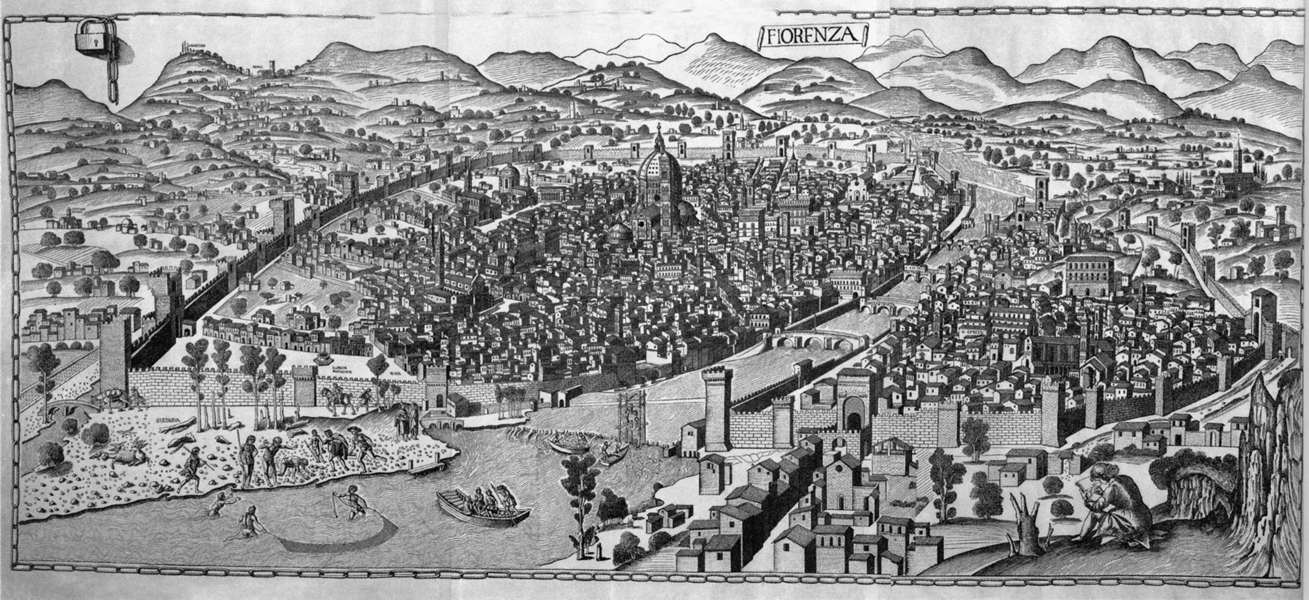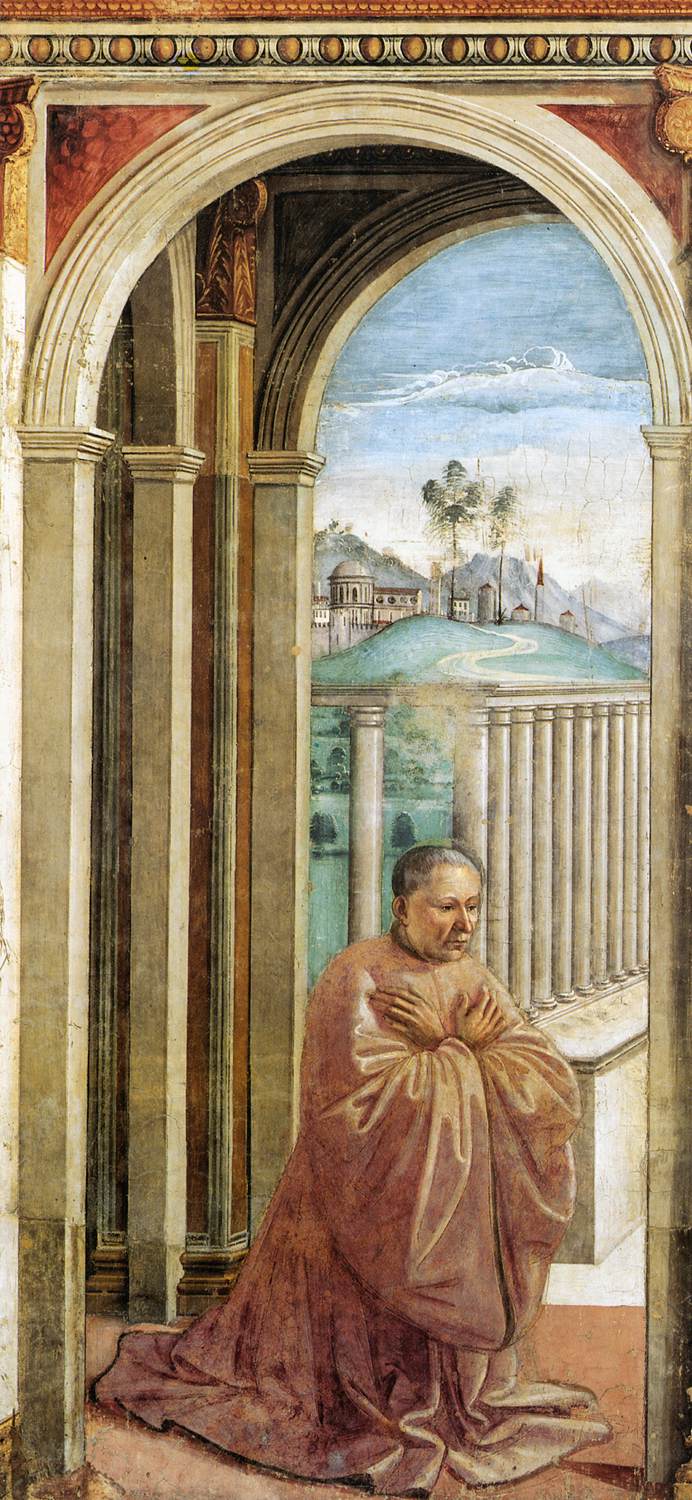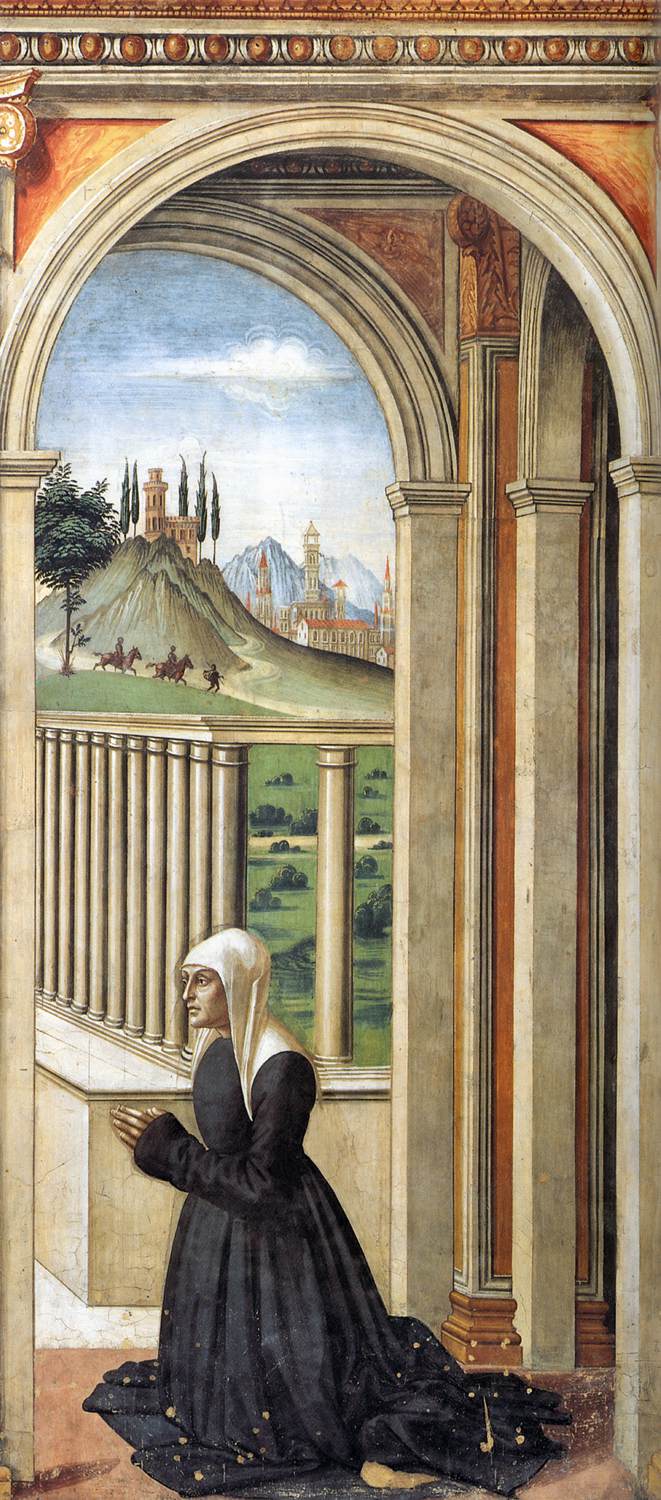Cultural Dialogue between North and South
Tommaso Portinari (1428-1501) was an agent of the Medici family in Bruges, where he headed a branch of the Medici bank. Tommaso was known for his interest in Northern Art, no doubt cultivated during the time he spent in Bruges, and had his and his wife’s portrait painted by Hans Memling in an extraordinarily realistic manner. Among Tommaso’s most notable contributions to Italian culture, however, is the Portinari Altarpiece, a monumental achievement by Netherlandish painter Hugo van der Goes (c.1440-1482). This triptych, though completed in the Dutch style, aligned with Florentine tastes for grandiose commissions; it is one of the largest Netherlandish paintings of the 15th century.
The triptych was intended for the altar of Sant’ Egidio in Florence, the Portinari family church, where it was held for a time. Today it is housed in the Uffizi Gallery in Florence. The scene is dominated by the theme of the Adoration of the Magi which appears in the central panel. In many ways, the painting fuses Northern elements with those of Florentine Renaissance art. As was customary in private patronage in Florence, the donors are depicted on either side of the central scene, a practice which can also be observed in Domenico Ghirlandaio’s Tornabuoni Chapel frescoes and Masaccio’s Trinity, both in Santa Maria Novella, Florence. However, the abundant, angular folds of the drapery and the slightly skewed perspective, not to mention the unflattering realism, of van der Goes painting speaks more to a Northern approach to painting.
When the triptych arrived in Florence on 28th May 1483 it caused quite a sensation amongst artists and critics. With the vogue of albertian naturalism, the striking realism achieved by van der Goes’ use of oil paint (a relatively unused medium in Florence at the time) piqued the interest of artists whose goal it was to create a ‘window onto the world’. Further, the lack of idealisation of the Virgin, Christ, and especially of the shepherds represented a notable departure from contemporary practices observed when executing sacred scenes. The triptych had a notable influence on manuscript illumination, and especially on Umbrian painters such as Luca Signorelli.
Reference: Dirk de Vos, The Flemish Primitives: The Masterpieces, Princeton, NJ: Princeton University Press, 2002.
Hugo van der Goes, Portinari Altarpiece, 1476-79, oil on wood, Uffizi, Florence.
Hans Memling, Portrait of Tommaso Portinari and his Wife Maria Maddalena Baroncelli, c.1470, oil on wood, Metropolitan Museum of Art, NY.
Francesco Roselli, View of Florence with the Chain, 1480s, woodcut, Biblioteca Nazionale Centrale, Florence.
Masaccio, Trinity, c.1425, fresco, Santa Maria Novella, Florence.
Domenico Ghirlandaio, Portraits of Giovanni Tornabuoni and Francesca Pitti-Tornabuoni, 1486-90, fresco, Santa Maria Novella, Florence.
(Images: Web Gallery of Art)
Further Reading: Susanne Franke, “Between Status and Spiritual Salvation: The Portinari Triptych and Tommaso Portinari’s Concern for His Memoria.” Simiolus: Netherlands Quarterly for the History of Art 33, no. 3 (2007): 123-44.
Posted by: Matthew Whyte





